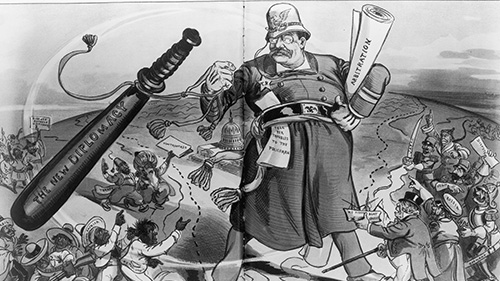AP® Gov: Preparing for FRQ #4
You know the Style #4 Free Response Question on the College Board’s national Government exam can be a real challenge. I am talking about the argument...
AP & Honors Mathematics
Explore Wiley titles to support both AP and Honors mathematics instruction.
Literacy Skills & Intensive Reading
Connections: Reading – Grades 6–12
Empower student success with a proven intensive reading program that develops strong reading skills in striving readers.
Drama, Speech & Debate
Basic Drama Projects 10th Edition
Build students’ confidence and competence with comprehensive, project-based theatre instruction.
Literature
Connections: Literature
Support learners as they study dynamic, relevant texts and bring the richness of diverse voices to students through literature.
Literature & Thought
Develop critical thinking, reading, and writing across literacy themes, genres, historical eras, and current events.
Language Arts
Vocabu-Lit® – Grades 6–12
Help students build word power using high-quality contemporary and classic literature, nonfiction, essays, and more.
Connections: Writing & Language
Help students develop grammar, usage, mechanics, vocabulary, spelling, and writing and editing skills.
Reading/English Language Arts
Measuring Up to the English Language Arts Standards
Incorporate standards-driven teaching strategies to complement your ELA curriculum.
English Language Learners
Measuring Up for English Language Learners
Incorporate research-based best practices for ELLs with an approach that includes a focus on language acquisition strategies.
Mathematics
Measuring Up to the Mathematics Standards
Incorporate standards-driven teaching strategies to complement your mathematics curriculum.
Foundations
Measuring Up Foundations
Help students master foundational math skills that are critical for students to find academic success.
Science
Measuring Up to the Next Generation Science Standards
Give students comprehensive NGSS coverage while targeting instruction and providing rigorous standards practice.
Assessment
Measuring Up Live
Deliver innovative assessment and practice technology designed to offer data-driven instructional support.
For a better website experience, please confirm you are in:

The Free-Response Question (FRQ) portion of the Advanced Placement® exam provides test takers with the opportunity to demonstrate their knowledge on a vast array of topics in a concise manner. In many instances, each bullet can be answered in one to three sentences if students are able to completely understand the question and correctly discern what the question is asking. In my many years of AP® exam grading, I have found that the answers that typically get full credit are not the longest, but those that can draw upon previously created schema of HOW government works and apply that knowledge in the question.
Here are some of my best tips and strategies to review with your students as they review how to complete an FRQ.
Below is a sample FRQ (which I accessed from College Board®) from the 2019 AP exam.
“This question requires you to compare a Supreme Court case you studied in class with one you have not studied in class. A summary of the Supreme Court case you did not study in class is presented below with all the information you need to know about this case to answer the prompt.
In the 1950s, Pete Hernandez, a Mexican American agricultural worker, was found guilty of murder and sentenced to life in prison by an all-white jury in Jackson County, Texas. Hernandez’s defense claimed that people of Mexican ancestry had been discriminated against in Jackson County. They pointed to the fact that no person of Mexican ancestry had served on a jury in 25 years and that the Jackson County Courthouse itself practiced segregation in its facilities. The five jury commissioners, who selected the members of the grand jury, testified under oath that they selected jurors based only on their qualifications and did not consider race or national origin in their decisions.
In the ensuing case, Hernandez v. Texas (1954), the Supreme Court unanimously ruled in favor of Hernandez, deciding that evidence of discrimination against Mexican Americans existed in Jackson County and that the Constitution prohibits such discrimination.
Based on the information above, respond to the following questions.
In Part A, the question is simply asking students to draw on their schema from Brown v. Board of Education and connect this to the Equal Protection Clause of the 14th Amendment.
In Part B, students are expected to connect Brown to Hernandez. By first identifying how Brown was caused by discrimination in schools, students will get the first point. Students could then connect this to the discrimination which occurred in Jackson County, demonstrating how discrimination against potential Mexican American jurors led to an equal protection clause violation.
Finally, in Part C, students are asked to apply their knowledge of interest groups and techniques that interest groups use. Students could consider lobbying of elected officials using the Hernandez case, amicus curiae in future litigation, or even pursing litigation in future cases. The point is that the student must use the outcome of the case in the context of the goals of the interest group.
Hopefully this breakdown helps you guide your students as you review for the AP® exam.
Best of luck!
Pat Sprinkle is a 13th year history teacher at the NYC Lab School for Collaborative Studies, teaching AP® U.S. History and AP® U.S. Politics and Government. Pat is a graduate of The Ohio State University and Columbia University. Pat has served as a member of the Teacher Advisory Council for the Bill and Melinda Gates Foundation, National Humanities Center, and the National Constitution Center. In addition, Pat was a 2013 James Madison Fellow along with a 2021 C-SPAN Fellow. Pat lives in Jersey City, NJ with his wife, son (Franklin), and dog (Lyndon).

You know the Style #4 Free Response Question on the College Board’s national Government exam can be a real challenge. I am talking about the argument...

The argumentative essay question on the AP U.S. Government and Politics exam demands a synthesis of content knowledge, analytical skill, and...

Each year after the AP® exam I ask students to evaluate my class. Last year, they overwhelmingly identified that they wanted to work on FRQs more...

It’s about that time. The Advanced Placement® Government & Politics Exam is around the corner. I’m sharing my top five tips to help you prepare...

In 2021, the College Board® added a new section to the AP® U.S Government and Politics Exam: quantitative analysis. This counts for four raw points...

Perhaps you heard of that Supreme Court decision handed down last year, where citizens and an interest group challenged a government-run World War I...

Political cartoons have influenced the public and brought about change like other tools in the press. The historic 1754 cartoon of a sliced-up snake,...

Though the College Board’s AP® United States Government and Politics FRQs #3 and #4 may be more involved and seem more challenging, FRQ #1 and #2 can...

Many teachers consider the Document Based Question (DBQ) of the AP® European History Exam to be one of the more challenging aspects of the course....

Early in a school year it can be a real challenge to know how to begin teaching students critical skills they need to score on the AP® U.S. History...

You may have heard about the “Irish” Thesis Formula—it is all over the internet. Some teachers like it, others hate it, but whatever you think about...

This year’s AP Psychology Exam will be the first exam with the new curriculum which focuses intensely on research. Some may wonder about this focus...
